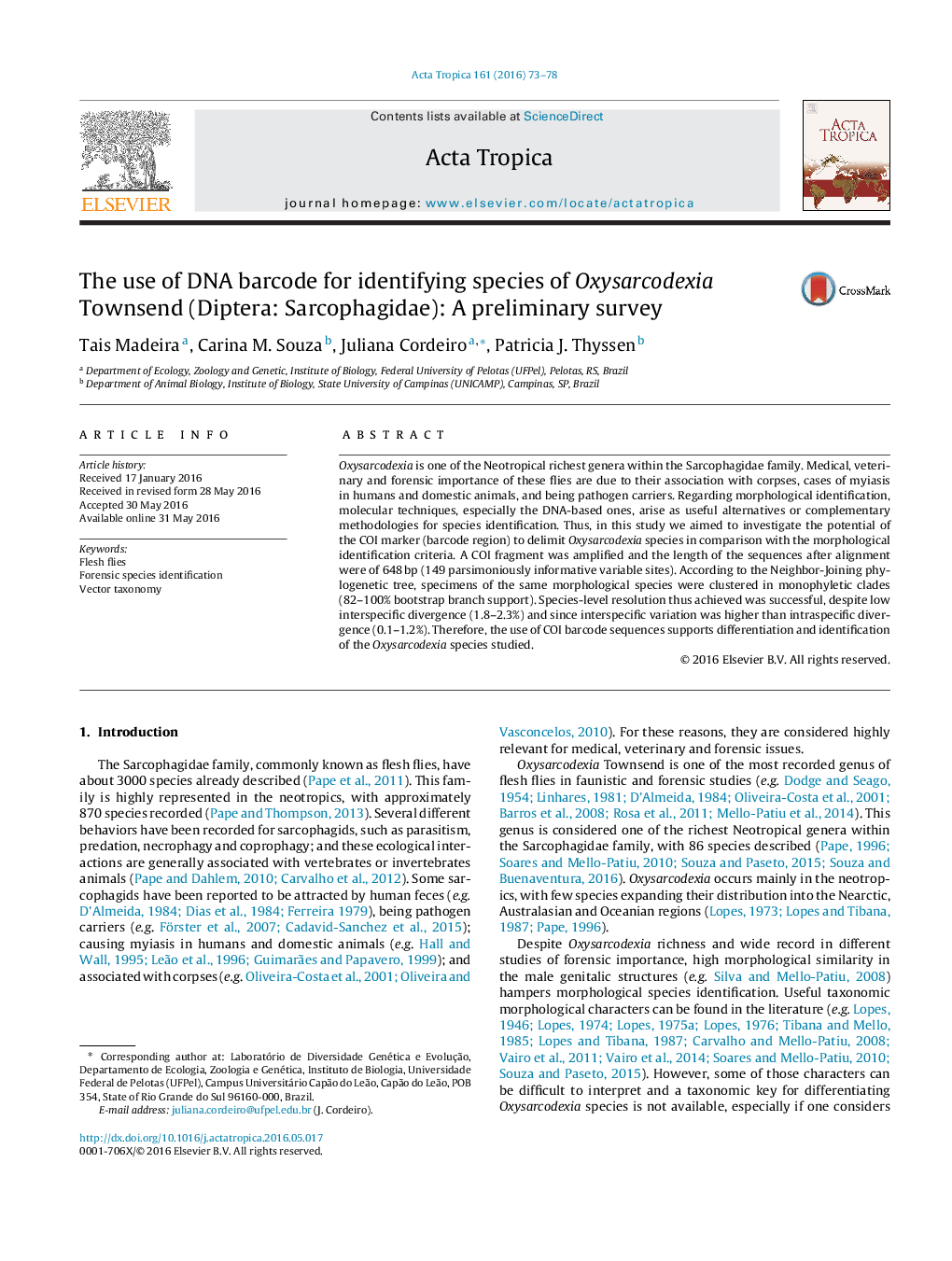| Article ID | Journal | Published Year | Pages | File Type |
|---|---|---|---|---|
| 3393727 | Acta Tropica | 2016 | 6 Pages |
•DNA-based techniques can be complementary to flies morphological identification.•An alternative method for flesh flies identification is presented.•Barcode corroborated morphological identification of the studied species.•COI barcode has been proved suitable for Oxysarcodexia species identification.
Oxysarcodexia is one of the Neotropical richest genera within the Sarcophagidae family. Medical, veterinary and forensic importance of these flies are due to their association with corpses, cases of myiasis in humans and domestic animals, and being pathogen carriers. Regarding morphological identification, molecular techniques, especially the DNA-based ones, arise as useful alternatives or complementary methodologies for species identification. Thus, in this study we aimed to investigate the potential of the COI marker (barcode region) to delimit Oxysarcodexia species in comparison with the morphological identification criteria. A COI fragment was amplified and the length of the sequences after alignment were of 648 bp (149 parsimoniously informative variable sites). According to the Neighbor-Joining phylogenetic tree, specimens of the same morphological species were clustered in monophyletic clades (82–100% bootstrap branch support). Species-level resolution thus achieved was successful, despite low interspecific divergence (1.8–2.3%) and since interspecific variation was higher than intraspecific divergence (0.1–1.2%). Therefore, the use of COI barcode sequences supports differentiation and identification of the Oxysarcodexia species studied.
Graphical abstractFigure optionsDownload full-size imageDownload as PowerPoint slide
